What is Parkinson’s disease?
Parkinson’s disease (PD) is a progressive neurodegenerative disorder, which means it’s a condition that affects your brain and its symptoms increase over time. While Parkinson’s disease is often recognized for its effects on movement, balance, and muscle control, it can also impact many other functions of the nervous system. These include memory, thinking, mental health, as well as digestive, urinary and sensory functions.
More than a million people in the US live with Parkinson’s disease, and nearly 100,000 new cases are diagnosed each year. PD is most commonly diagnosed in those over 65 years old, but can be diagnosed as early as your 20s and as late as your 80s or beyond.
While most people associate PD with tremors (shaking), this symptom affects only a little more than half of people with the condition. The main symptoms that affect everyone with PD is that over time it makes everyday movements slower and more difficult. Other motor symptoms that can occur with PD include rigidity (muscle stiffness), trouble walking and balance problems.
Parkinson’s happens when a protein called alpha-synuclein clumps in certain areas of the brain, reducing dopamine—a chemical that helps control movement. As dopamine levels drop, movement becomes harder, but symptoms vary from person to person.
The good news is that research is making progress. Scientists have discovered genes linked to Parkinson’s disease and are learning more about the chemical changes in the brain that cause it. These breakthroughs are leading to new treatment possibilities and hope for better ways to manage—and maybe even someday cure—the condition.
Parkinson’s disease symptoms
Parkinson's disease affects people differently. In the early stages, symptoms may be mild and hard to notice. They often start on one side of the body and can eventually impact both sides, with one side often being more affected than the other. Some symptoms of Parkinson’s disease can be similar to those of other conditions.
Parkinson’s symptoms are generally grouped into two categories: motor symptoms and non-motor symptoms.
-
Motor symptoms
Doctors diagnose Parkinson’s disease by looking for two or more of these symptoms, but not everyone has all of them. Some people, especially those diagnosed at a younger age, may only experience one or two symptoms early on.
Having a tremor doesn’t always mean you have Parkinson’s, and not everyone with Parkinson’s has a tremor. If you notice movement changes, it’s a good idea to see a neurologist or a movement disorder specialist for an evaluation.
Parkinson’s disease can affect movement in different ways, but doctors look for these main symptoms:
- Shaking (tremors): Often the first noticeable sign, tremors usually happen when the body is at rest. They often start in one hand, foot or leg and may eventually affect both sides. Some people also experience tremors in the jaw, chin, mouth or tongue. Others may feel an internal tremor—a shaking sensation that isn’t visible to others.
- Stiffness (rigidity): Many people with Parkinson’s feel tightness or stiffness in their arms, legs or torso. Early on, this can be mistaken for arthritis or joint problems.
- Slowness of movement (bradykinesia): Parkinson’s can make movements slower and smaller over time, making everyday tasks more difficult. It can also lead to reduced facial expression (sometimes called "facial masking"), fewer eye blinks, trouble turning over in bed, and small, cramped handwriting (micrographia).
- Walking changes (gait disturbances): People with Parkinson’s often develop characteristic changes in the way they walk, including decreased arm swing (usually in one side at first), stooped posture and decreased step length (shuffling). Some people with PD also develop freezing of gait, where the feet may feel “stuck” to the ground when trying to walk, especially in tight areas or passing through doorways.
- Balance problems (postural instability): As Parkinson’s progresses, balance issues become more common, making it harder to stand upright or avoid falls. Some people tend to lean or fall backward (retropulsion), and even a small push can cause them to lose their balance.
-
Non-motor symptoms
While Parkinson’s disease is known for affecting movement, it also comes with a variety of other symptoms that don’t involve movement but can still have a big impact on daily life. These are called non-motor symptoms, and they can sometimes be overlooked. Here are some common ones:
- Cognitive changes: In the later stages of Parkinson’s, many people experience difficulty with thinking, memory and decision-making. Some may struggle with organizing tasks or multitasking. Confusion can also happen, sometimes as a side effect of Parkinson’s medications.
- Depression and anxiety: Feelings of sadness or worry are common in Parkinson’s. These symptoms can vary in intensity and may improve with treatment, including medication or therapy like cognitive behavioral therapy (CBT).
- Loss of smell: A reduced or lost sense of smell can happen early in Parkinson’s, sometimes even before movement problems appear. This is one of the earliest signs that can show up.
- Vision problems: Parkinson’s disease can affect eye movement and blinking, leading to dry eyes and discomfort. This may cause irritation or difficulty with vision.
- Fatigue and sleep problems: Many people with Parkinson’s feel tired or drained, which may be linked to depression, trouble sleeping or other aspects of the condition. Sleep can often be “fragmented”, where a person may wake up multiple times per night and have trouble falling asleep. Others may experience frequent, vivid dreams and nightmares or even act out their dreams.
- Digestive problems: Constipation is common in Parkinson’s because the condition can slow down the digestive system.
- Dizziness and lightheadedness: Some people with Parkinson’s experience dizziness, especially when standing up quickly or changing positions. This can happen because the body has trouble adjusting blood pressure.
- Pain: Pain can be a part of Parkinson’s, either from the condition itself or from other health conditions. Some types of pain are specific to Parkinson’s.
- Personality changes: Parkinson’s can cause subtle changes in personality over time. In some cases, Parkinson’s medications can lead to impulsive behaviors like gambling or taking more risks than usual.
- Hallucinations and delusions: In later stages of Parkinson’s, some people experience hallucinations (seeing or hearing things that aren’t there) or delusions (false beliefs).
- Sexual dysfunction: A decrease in sexual desire is common in Parkinson’s, though some medications may increase it. For men, difficulty with erections (impotence) can happen, but this could also be due to other age-related factors.
- Excessive sweating: Sweating, especially in the upper body, can be more common in Parkinson’s, especially if the condition is not well controlled.
- Urinary issues: Frequent urination or feeling an urgent need to go, especially at night, is another symptom. Some people also have difficulty starting urination or emptying the bladder completely.
- Weight loss: Unintended weight loss, especially in later stages, is common with Parkinson’s. If weight loss is significant, it’s important to consult a doctor to rule out other causes.
When to see a doctor
Speak to your doctor if you experience any symptoms of Parkinson’s disease, particularly if they are worrisome or interfere with your daily life. Many symptoms can have other causes, so they do not necessarily mean you have Parkinson’s disease. Your primary care provider may refer you to a neurologist or a movement disorders specialist.
What causes Parkinson's disease?
Scientists do not know exactly what causes Parkinson’s disease. A small minority of cases (about 10%) can be linked to genetic variants and are hereditary. The majority of cases, however, are thought to be caused by a complex interaction between your genes and environmental factors.
The condition develops when changes in your nervous system affect the production of a key brain chemical called dopamine.
Dopamine controls your body’s movement and other functions. When you have Parkinson’s disease, neurons in your brain that make dopamine stop working or die. As a result, you develop a tremor, slowness, balance problems and other non-movement symptoms.
Parkinson’s disease risk factors
Anyone can develop Parkinson’s disease. Some people are more likely to be affected due to their family history or exposure to toxic substances. Although researchers are investigating other potential risk factors, those that are known include:
- Age: Your risk of Parkinson’s disease increases with age. Most people diagnosed are aged 60 or older.
- Environment: Exposure to some pesticides and other toxic substances can increase your risk.
- Ethnic background: People of Ashkenazi Jewish or North African origin are more likely to carry a genetic mutation linked to Parkinson’s disease.
- Family history: You are more likely to be affected if a close family member has Parkinson’s disease
- Sex: Men are more likely to develop the condition than women.
How is Parkinson's disease diagnosed?
Currently, there isn’t a single test to diagnose Parkinson’s disease. Instead, a neurologist will make the diagnosis based on your medical history, symptoms and a neurological and physical exam.
Diagnosing Parkinson’s disease can take time. Your doctor may suggest follow-up visits with a neurologist who specializes in movement disorders to track your symptoms and evaluate your condition over time.
Your healthcare team may recommend some of the following tests and procedures.
Medical history and exam
The first and most important step in diagnosing Parkinson’s disease is a thorough medical history and physical exam by a neurologist.
During the visit, your neurologist will:
- Review your history: This includes talking about your symptoms, any existing medical conditions, medications you’re currently taking or have taken in the past, your family history and lifestyle factors. Some medications or medical conditions, like essential tremor or Parkinsonism syndrome, can cause symptoms that are similar to Parkinson’s disease.
- Conduct a physical exam: Your neurologist will ask you to do tasks to check things like your arm and leg movement, muscle tone, balance and walking. They will look for:
- How your face and speech move
- Any tremors in your hands, arms or legs, either at rest or during activity
- Stiffness in your arms, legs or neck
- Changes in your walking pattern, step size or turning ability
- Your balance and posture
You may notice that your neurologist records your exam using the Unified Parkinson’s Disease Rating Scale (UPDRS). This is a standard scale used by neurologists and movement disorder specialists to assess and document your symptoms. It helps track the progression of the condition, judge the effect of medications and serve as a baseline for future visits.
Imaging and lab tests
Several tests can help doctors diagnose Parkinson’s disease or rule out other conditions that might be causing your symptoms. These tests, along with your doctor’s exam and medical history, help paint a clearer picture of your health and assist in making a diagnosis. Talk to your doctor about which tests are right for you based on your symptoms and health history.
- Dopamine transporter scan (DaTscan): This is an imaging test that checks for changes in the part of your brain that controls movement. It can help confirm Parkinson’s by showing reduced dopamine activity, which is common in the condition.
- Magnetic resonance imaging (MRI) scan: An MRI uses magnets and radio waves to create detailed images of your brain. While it doesn’t diagnose Parkinson’s directly, it can rule out other conditions, like brain tumors or strokes, that might cause similar symptoms.
- Computed tomography (CT) scan: A CT scan uses X-rays to create images of your brain. Like an MRI, it can help doctors rule out other conditions, though it's less commonly used for diagnosing Parkinson’s.
- Genetic testing: If you have a family history of Parkinson’s disease, genetic testing may be helpful. It can identify certain gene mutations that increase the risk of Parkinson’s, particularly in younger people who may have a genetic form of the disease.
- Positron emission tomography (PET) scan: A PET scan uses a small amount of radioactive material to see how different parts of your brain are working. This test can assess how well your brain is using dopamine, which can help with a Parkinson’s diagnosis.
- Blood tests: Blood tests can’t diagnose Parkinson’s but can help rule out other conditions, such as infections or thyroid problems, that might cause similar symptoms. They can also help track how medications are affecting you.
Biomarker tests
There are two tests for Parkinson’s disease that are available. One test looks at the fluid around your brain and spine, while the other involves a skin biopsy. Talk to your doctor to see if either of these tests might be helpful for you.
- Spinal tap: This test checks for abnormal proteins in the fluid that surrounds your brain and spine, called cerebrospinal fluid. It involves a procedure called a spinal tap (or lumbar puncture), where a doctor uses a needle to collect a small sample of the fluid from your spinal area.
- Skin biopsy: This test involves taking a small sample of skin that includes nerves close to the surface. The doctor will collect samples from your back and legs. The samples are then tested to see if there’s a specific problem with the proteins in your skin that could increase your risk of Parkinson’s disease.
Parkinson’s disease treatment
While there isn’t a cure for Parkinson’s disease yet, there are many treatments and lifestyle changes that can help manage symptoms. Medications are usually the main treatment, but doctors often recommend combining them with other therapies for the best results. Physical, occupational and speech therapy can be very helpful in improving movement, daily activities and communication. For some people, surgery might be an option. In addition, complementary therapies can also help with some symptoms. Your doctor and healthcare team will work with you to create a treatment plan that’s right for you.
Lifestyle changes
Staying healthy and active is important for managing Parkinson’s disease. Research shows that by focusing on diet and regular exercise, you can improve your health, control symptoms and enhance your quality of life. Always talk to your doctor before making any changes to your routine to ensure it’s the right approach for you.
Diet tips
A balanced diet is key for overall health and managing Parkinson’s symptoms. Eating whole foods like fruits, vegetables, lean proteins, whole grains and staying hydrated can help you feel energized and healthy. Here are a few things to consider:
- Constipation: Many people with Parkinson’s experience constipation due to slower digestion. Eating plenty of fiber from fruits, vegetables and whole grains, and drinking enough fluids can help prevent it.
- Dehydration: Parkinson’s medications can lead to dehydration, which may cause tiredness or confusion. Be sure to drink enough water throughout the day.
- Medication and food: The main Parkinson’s medication, carbidopa-levodopa, is best absorbed when taken without a high-protein meal. Try to eat protein-rich foods later in the day to help the medication work more effectively.
Exercise benefits
Exercise is one of the best ways to manage Parkinson’s disease. Regular activity, including cardiovascular exercises like walking and balance training, can improve strength, coordination and mobility. It can also slow the progression of symptoms. Here's how exercise helps:
- Improves movement: Regular exercise, such as walking, can improve your walking speed and stride length, which can be affected by Parkinson’s.
- Prevents inactivity: Fear of falling or other motor symptoms might make you more cautious and less active, but staying active through everyday tasks like household chores or yard work can help maintain your mobility.
- Supports brain health: Exercise can help your brain form new connections and maintain its ability to function, potentially slowing down the effects of Parkinson’s.
Medication
Most people with Parkinson’s disease will need medication at some point to help control their symptoms. There are different types of medications, and your doctor will recommend the ones that work best for you.
Oral medications
- Levodopa: The most common medication, levodopa helps increase dopamine in the brain. It’s often combined with carbidopa to reduce side effects like nausea.
- Enzyme inhibitors (e.g., MAO-B inhibitors, COMT inhibitors): These medications help prevent the breakdown of dopamine in your brain, which can help extend the effects of levodopa.
- Dopamine agonists: These drugs mimic the effects of dopamine in your brain. They can be especially helpful in the early stages of Parkinson’s disease.
- Amantadine: This drug helps with the main symptoms of PD and can also be used to manage side effects, like involuntary movements (dyskinesia).
- Anticholinergic drugs: These help reduce tremors by blocking a brain chemical called acetylcholine. They are generally used for younger people but are less commonly recommended for those over 60 because of potential side effects.
Continuous infusions
For some people with Parkinson’s disease, oral medications may not control symptoms well enough throughout the day. Newer options include continuous infusion therapies, which deliver medicine steadily over time delivered through an adhesive patch on the skin. This can help keep dopamine levels more stable and reduce “off” periods when symptoms return between doses.
- Carbidopa/levodopa infusion: This treatment provides a continuous dose of carbidopa/levodopa through a pump, helping to smooth out fluctuations in movement symptoms and reduce the need for frequent oral doses.
- Apomorphine infusion: Apomorphine is a type of medication known as a dopamine agonist that can be given by continuous infusion under the skin. This option helps reduce “off” episodes and may be used when oral medications are not enough.
Your doctor will determine whether an infusion is right for you, based on your symptoms, lifestyle and how well other medications are working.
Therapy
Therapies are an important part of managing Parkinson’s disease and can help improve daily functioning.
- Physical therapy: Physical therapists help improve movement, balance and coordination, which can make everyday tasks like walking and getting in and out of chairs easier.
- Occupational therapy: Occupational therapists help you adapt to daily tasks and routines, so you can stay independent for as long as possible. They may suggest special tools or techniques to make tasks easier.
- Speech therapy: Speech therapists can help with voice, speech clarity and swallowing difficulties, which are common in people with Parkinson’s disease.
Complementary medicine
In addition to your regular treatment, some people find that integrative medicine can help relieve certain symptoms. These might include:
- Yoga: Improves strength, flexibility and balance.
- Acupuncture: May help with pain and muscle stiffness.
- Massage therapy: Can help relax muscles and reduce tension.
Always talk to your doctor before trying complementary therapies to make sure they’re safe for you.
Social support
Having support from family, friends or a support group can make a big difference in managing Parkinson’s disease. Connecting with others who understand what you’re going through can provide emotional support and practical tips for managing day-to-day challenges. Talking to a counselor or therapist may also help you cope with the emotional aspects of Parkinson’s.
Surgery
If medications and therapies don’t provide enough relief, your doctor may recommend surgery. Surgery can help manage symptoms when other options aren’t enough. Surgery isn’t right for everyone, and your doctor will discuss the benefits and risks with you before making a decision.
- Deep brain stimulation (DBS): This involves implanting a device under the skin (similar to a pacemaker) that sends electrical signals to specific areas of the brain. It can help reduce tremors, stiffness and other movement problems.
Find specialized Parkinson’s disease care
You can access comprehensive and compassionate care for Parkinson’s disease at locations throughout North and Central Texas. Our expert neuroscience team offers the latest advanced treatments, tailored to your needs.

Baylor Scott & White Dallas Diagnostic Association - Garland (Satellite)
5220 W University Dr POB II, Ste 250, McKinney, TX, 75071
- Monday: 8:00 am - 5:00 pm
- Tuesday: 8:00 am - 5:00 pm
- Wednesday: 8:00 am - 5:00 pm
- Thursday: 8:00 am - 5:00 pm
- Friday: 8:00 am - 5:00 pm
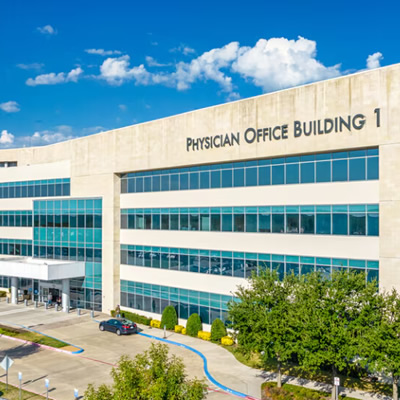
Baylor Scott & White Neurology - McKinney
5236 W University Dr Ste 3700, McKinney, TX, 75071
- Monday: 8:00 am - 5:00 pm
- Tuesday: 8:00 am - 5:00 pm
- Wednesday: 8:00 am - 5:00 pm
- Thursday: 8:00 am - 5:00 pm
- Friday: 8:00 am - 5:00 pm

Baylor Scott & White Medical Center - McKinney
5252 W University Dr Highway 380 at Lake Forest Drive, McKinney, TX, 75071
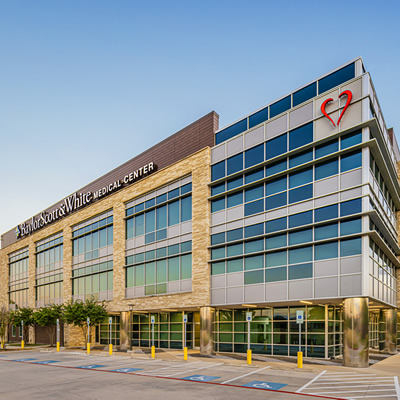
Baylor Scott & White Medical Center - Lake Pointe
6800 Scenic Dr , Rowlett, TX, 75088

Baylor Scott & White Neurology - Lake Pointe
7600 Lakeview Pkwy Ste 150, Rowlett, TX, 75088
- Monday: 8:00 am - 4:00 pm
- Tuesday: 8:00 am - 4:00 pm
- Wednesday: 8:00 am - 4:00 pm
- Thursday: 8:00 am - 4:00 pm
- Friday: 8:00 am - 4:00 pm
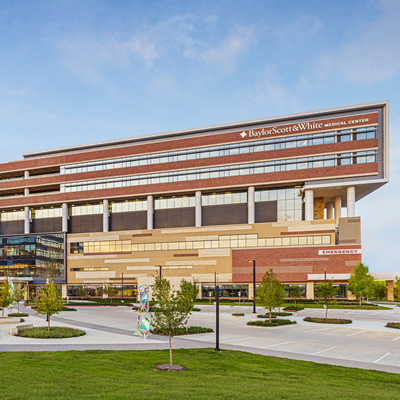
Baylor Scott & White Medical Center - Frisco at PGA Parkway
7600 Better Way , Frisco, TX, 75033
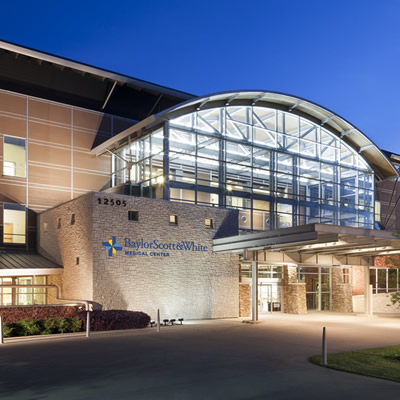
Baylor Scott & White Medical Center - Centennial
12505 Lebanon Rd , Frisco, TX, 75035
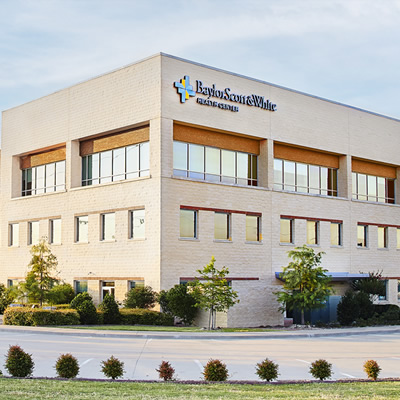
Baylor Scott & White Dallas Diagnostic Association - Garland
7217 Telecom Pkwy Ste 300, Garland, TX, 75044
- Monday: 8:00 am - 4:30 pm
- Tuesday: 8:00 am - 4:30 pm
- Wednesday: 8:00 am - 4:30 pm
- Thursday: 8:00 am - 4:30 pm
- Friday: 8:00 am - 4:30 pm
- Monday: 8:00 am - 4:15 pm
- Tuesday: 8:00 am - 4:15 pm
- Wednesday: 8:00 am - 4:15 pm
- Thursday: 8:00 am - 4:15 pm
- Friday: 8:00 am - 4:15 pm

Baylor Scott & White Orthopedic Associates of Dallas - Sports Concussion Program at The Star
3800 Gaylord Pkwy Ste 810, Frisco, TX, 75034
- Monday: 8:00 am - 5:00 pm
- Tuesday: 8:00 am - 5:00 pm
- Wednesday: 8:00 am - 5:00 pm
- Thursday: 8:00 am - 5:00 pm
- Friday: 8:00 am - 5:00 pm
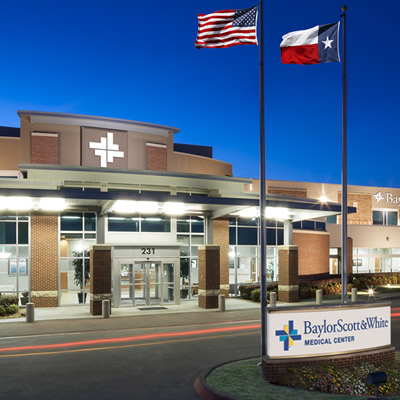
Baylor Scott & White Medical Center - Sunnyvale
231 S Collins Rd , Sunnyvale, TX, 75182

Baylor Scott & White Neurology - Plano
4708 Alliance Blvd Pavilion I, Ste 550, Plano, TX, 75093
- Monday: 8:00 am - 5:00 pm
- Tuesday: 8:00 am - 5:00 pm
- Wednesday: 8:00 am - 5:00 pm
- Thursday: 8:00 am - 5:00 pm
- Friday: 8:00 am - 4:30 pm

Baylor Scott & White - Plano Brain and Spine Center
4708 Alliance Blvd Pavilion I, Ste 810, Plano, TX, 75093

Baylor Scott & White Dallas Diagnostic Association - Plano
4716 Alliance Blvd Pavilion II, Plano, TX, 75093
- Monday: 7:00 am - 5:00 pm
- Tuesday: 7:00 am - 5:00 pm
- Wednesday: 7:00 am - 5:00 pm
- Thursday: 7:00 am - 5:00 pm
- Friday: 7:00 am - 5:00 pm
- Saturday: 8:00 am - 12:00 pm
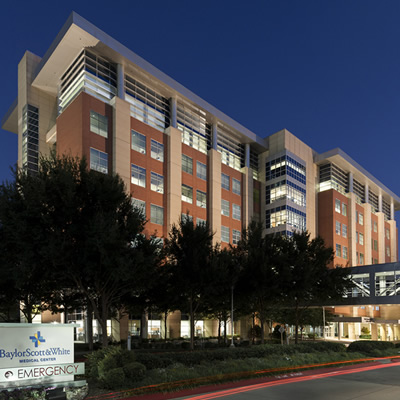
Baylor Scott & White Neurology Hospitalist Group - Plano
4700 Alliance Blvd , Plano, TX, 75093

Baylor Scott & White Medical Center - Plano
4700 Alliance Blvd , Plano, TX, 75093

Baylor Scott & White Headache Medicine Specialists of North Texas - Dallas
9101 N Central Expy Ste 400, Dallas, TX, 75231
- Monday: 8:00 am - 4:30 pm
- Tuesday: 8:00 am - 4:30 pm
- Wednesday: 8:00 am - 4:30 pm
- Thursday: 8:00 am - 4:30 pm
- Friday: 8:00 am - 4:30 pm

Baylor Scott & White Cognitive and Behavioral Neurology Associates
9101 N Central Expy Ste 230, Dallas, TX, 75231
- Monday: 8:00 am - 4:30 pm
- Tuesday: 8:00 am - 4:30 pm
- Wednesday: 8:00 am - 4:30 pm
- Thursday: 8:00 am - 4:30 pm
- Friday: 8:00 am - 4:30 pm

The Headache Center at Baylor University Medical Center
9101 N Central Expy Ste 400, Dallas, TX, 75231

Baylor Scott & White Neuroscience Center
9101 N Central Expy Ste 400, Dallas, TX, 75231

Baylor Scott & White Institute for Rehabilitation - Dallas
909 N Washington Ave , Dallas, TX, 75246
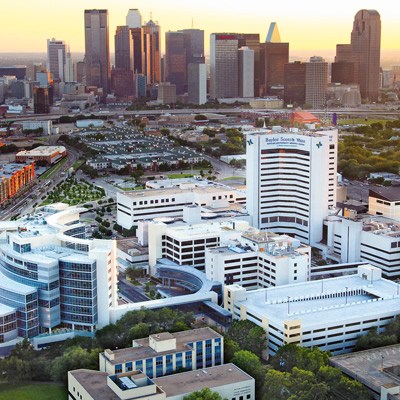
Baylor University Medical Center, part of Baylor Scott & White Health
3500 Gaston Ave , Dallas, TX, 75246
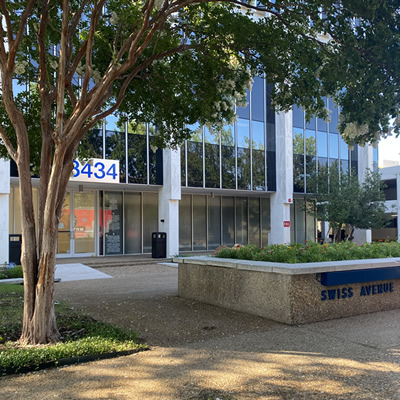
Baylor Scott & White Neurology - Dallas
3434 Swiss Ave Ste 400, Dallas, TX, 75204
- Monday: 8:00 am - 4:30 pm
- Tuesday: 8:00 am - 4:30 pm
- Wednesday: 8:00 am - 4:30 pm
- Thursday: 8:00 am - 4:30 pm
- Friday: 8:00 am - 2:00 pm

Baylor Scott & White Medical Center - Irving
1901 N MacArthur Blvd , Irving, TX, 75061

Baylor Scott & White Neurology - Irving
2021 N MacArthur Blvd Ste 210, Irving, TX, 75061
- Monday: 8:00 am - 4:30 pm
- Tuesday: 8:00 am - 4:30 pm
- Wednesday: 8:00 am - 4:30 pm
- Thursday: 8:00 am - 4:30 pm
- Friday: 8:00 am - 1:00 pm

Baylor Scott & White Medical Center - Grapevine
1650 W College St , Grapevine, TX, 76051

Baylor Scott & White Medical Center - Waxahachie
2400 N Interstate 35E , Waxahachie, TX, 75165

Baylor Scott & White All Saints Medical Center - Fort Worth
1400 8th Ave , Fort Worth, TX, 76104
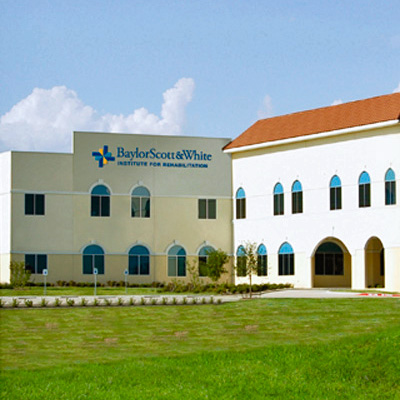
Baylor Scott & White Institute for Rehabilitation - Fort Worth
6601 Harris Pkwy , Fort Worth, TX, 76132
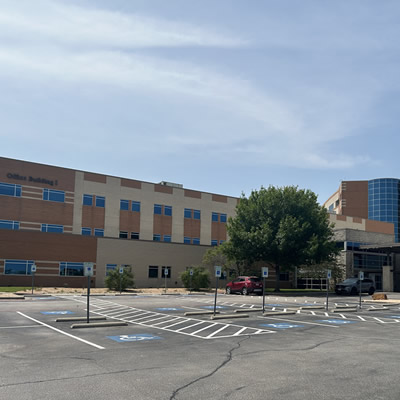
Baylor Scott & White Neurosciences Clinic - Waco
50 Hillcrest Medical Blvd Ste 201-A, Waco, TX, 76712
- Monday: 8:00 am - 5:00 pm
- Tuesday: 8:00 am - 5:00 pm
- Wednesday: 8:00 am - 5:00 pm
- Thursday: 8:00 am - 5:00 pm
- Friday: 8:00 am - 5:00 pm
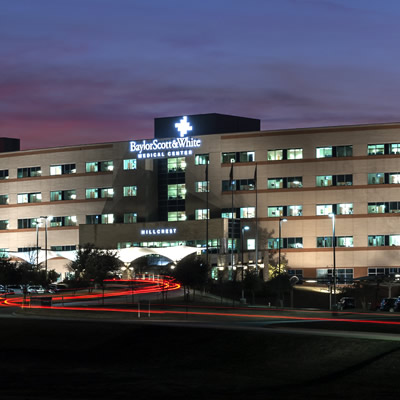
Baylor Scott & White Medical Center - Hillcrest
100 Hillcrest Medical Blvd , Waco, TX, 76712
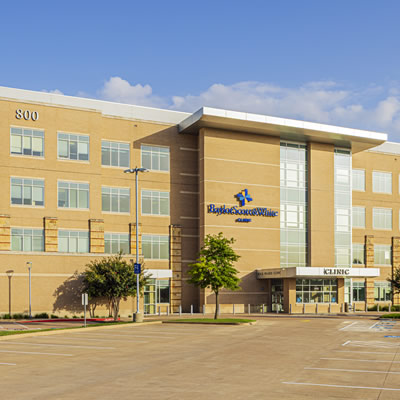
Baylor Scott & White Clinic - College Station Rock Prairie
800 Scott and White Dr , College Station, TX, 77845
- Monday: 7:30 am - 5:00 pm
- Tuesday: 7:30 am - 5:00 pm
- Wednesday: 7:30 am - 5:00 pm
- Thursday: 7:30 am - 5:00 pm
- Friday: 7:30 am - 5:00 pm
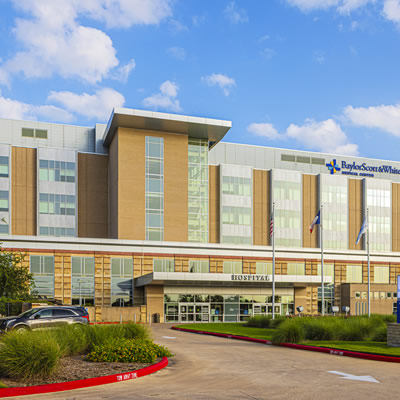
Baylor Scott & White Medical Center - College Station
700 Scott and White Dr , College Station, TX, 77845
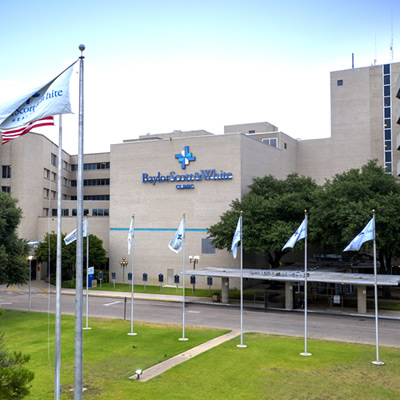
Baylor Scott & White Clinic - Temple
2401 S 31st St , Temple, TX, 76508
- Monday: 8:00 am - 5:00 pm
- Tuesday: 8:00 am - 5:00 pm
- Wednesday: 8:00 am - 5:00 pm
- Thursday: 8:00 am - 5:00 pm
- Friday: 8:00 am - 5:00 pm
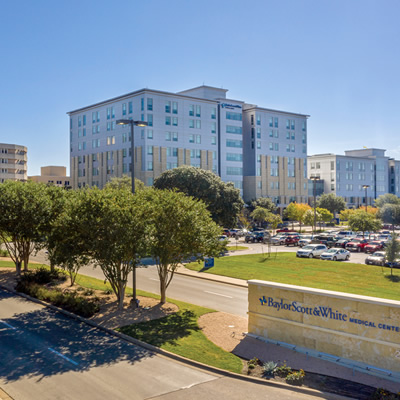
Baylor Scott & White Medical Center - Temple
2401 S 31st St , Temple, TX, 76508

Baylor Scott & White McLane Children's Medical Center - Temple
1901 SW H K Dodgen Loop , Temple, TX, 76502
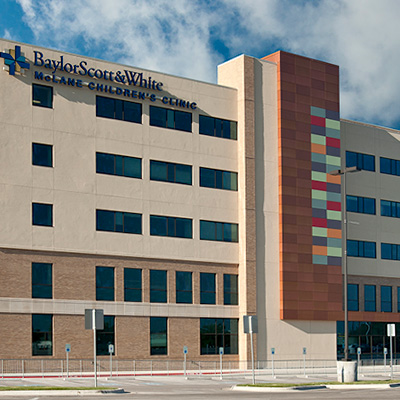
Baylor Scott & White McLane Children's Specialty Clinic - Temple
1901 SW H K Dodgen Loop , Temple, TX, 76502
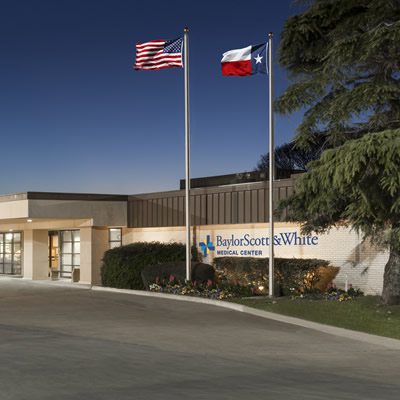
Baylor Scott & White Medical Center - Brenham
700 Medical Pkwy , Brenham, TX, 77833

Baylor Scott & White Specialty Clinic - Killeen Hemingway
2405 S Clear Creek Rd , Killeen, TX, 76549
- Monday: 8:00 am - 5:00 pm
- Tuesday: 8:00 am - 5:00 pm
- Wednesday: 8:00 am - 5:00 pm
- Thursday: 8:00 am - 5:00 pm
- Friday: 8:00 am - 5:00 pm
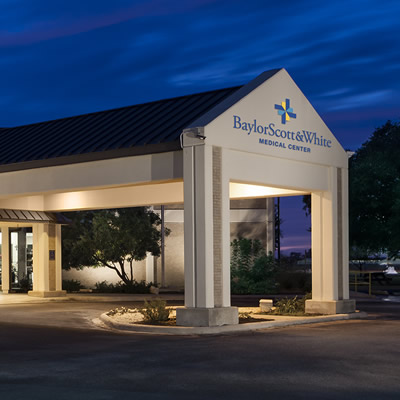
Baylor Scott & White Medical Center - Taylor
305 Mallard Ln , Taylor, TX, 76574
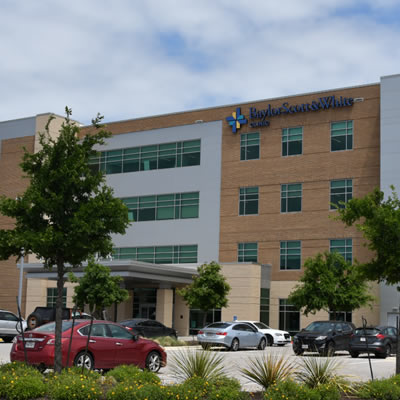
Baylor Scott & White Clinic - Round Rock 300 University
300A University Blvd , Round Rock, TX, 78665
- Monday: 8:00 am - 5:00 pm
- Tuesday: 8:00 am - 5:00 pm
- Wednesday: 8:00 am - 5:00 pm
- Thursday: 8:00 am - 5:00 pm
- Friday: 8:00 am - 5:00 pm

Baylor Scott & White Medical Center - Round Rock
300 University Blvd , Round Rock, TX, 78665
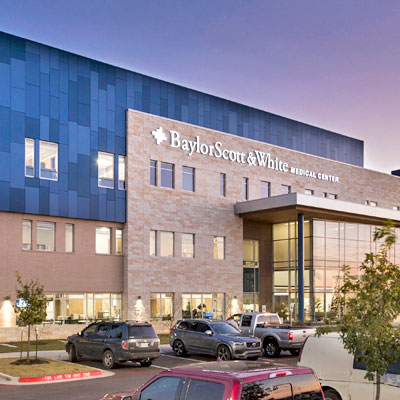
Baylor Scott & White Clinic - Pflugerville Medical Center (Building 1)
2600 E Pflugerville Pkwy Bldg 1, Ste 200, Pflugerville, TX, 78660
- Monday: 8:00 am - 5:00 pm
- Tuesday: 8:00 am - 5:00 pm
- Wednesday: 8:00 am - 5:00 pm
- Thursday: 8:00 am - 5:00 pm
- Friday: 8:00 am - 5:00 pm
- Monday: 7:30 am - 4:00 pm
- Tuesday: 7:30 am - 4:00 pm
- Wednesday: 7:30 am - 4:00 pm
- Thursday: 7:30 am - 4:00 pm
- Friday: 7:30 am - 4:00 pm
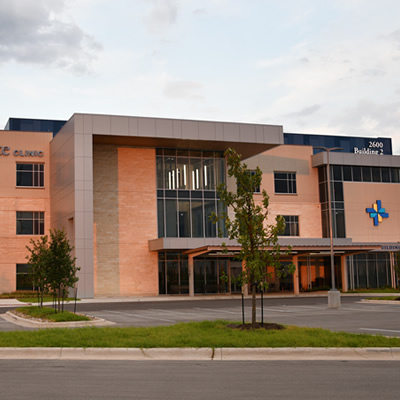
Baylor Scott & White Clinic - Pflugerville Medical Center Building 2
2600 E Pflugerville Pkwy Building 2, Pflugerville, TX, 78660
- Monday: 8:00 am - 5:00 pm
- Tuesday: 8:00 am - 5:00 pm
- Wednesday: 8:00 am - 5:00 pm
- Thursday: 8:00 am - 5:00 pm
- Friday: 8:00 am - 5:00 pm
- Monday: 8:00 am - 4:00 pm
- Tuesday: 8:00 am - 4:00 pm
- Wednesday: 8:00 am - 4:00 pm
- Thursday: 8:00 am - 4:00 pm
- Friday: 8:00 am - 4:00 pm
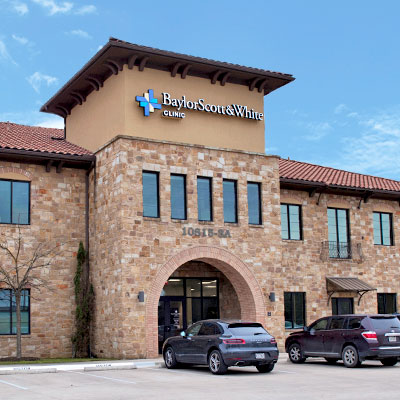
Baylor Scott & White Clinic - Austin River Place
10815 Ranch Rd 2222 , Austin, TX, 78730
- Monday: 8:00 am - 5:00 pm
- Tuesday: 8:00 am - 5:00 pm
- Wednesday: 8:00 am - 5:00 pm
- Thursday: 8:00 am - 5:00 pm
- Friday: 8:00 am - 5:00 pm
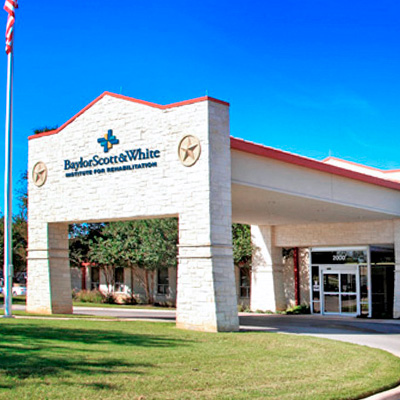
Baylor Scott & White Institute for Rehabilitation - Lakeway
2000 Medical Dr , Lakeway, TX, 78734
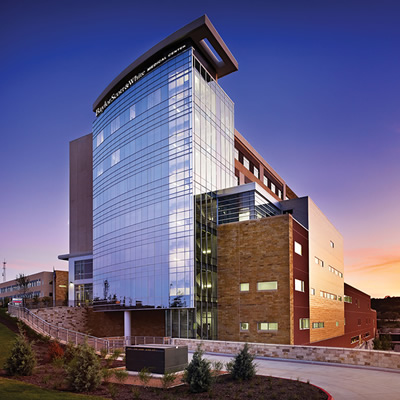
Baylor Scott & White Medical Center - Lakeway
100 Medical Pkwy , Lakeway, TX, 78738
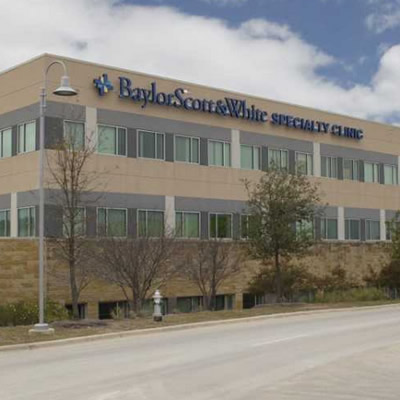
Baylor Scott & White Specialty Clinic - Lakeway
200 Medical Pkwy , Lakeway, TX, 78738
- Monday: 8:00 am - 5:00 pm
- Tuesday: 8:00 am - 5:00 pm
- Wednesday: 8:00 am - 5:00 pm
- Thursday: 8:00 am - 5:00 pm
- Friday: 8:00 am - 5:00 pm
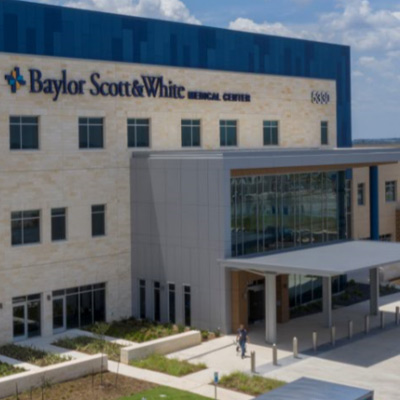
Baylor Scott & White Clinic - Buda Medical Center
5330 Overpass Rd Ste 100, Buda, TX, 78610
- Monday: 8:00 am - 5:00 pm
- Tuesday: 8:00 am - 5:00 pm
- Wednesday: 8:00 am - 5:00 pm
- Thursday: 8:00 am - 5:00 pm
- Friday: 8:00 am - 5:00 pm
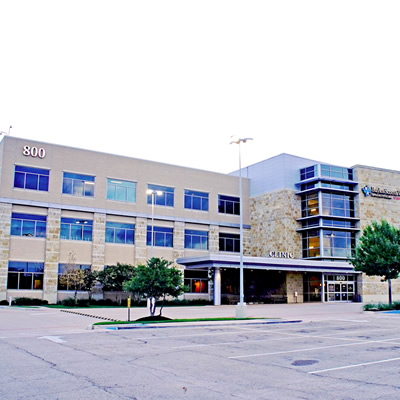
Baylor Scott & White Specialty Clinic - Marble Falls
800 W State Hwy 71 , Marble Falls, TX, 78654
- Monday: 8:00 am - 5:30 pm
- Tuesday: 8:00 am - 5:30 pm
- Wednesday: 8:00 am - 5:30 pm
- Thursday: 8:00 am - 5:30 pm
- Friday: 8:00 am - 5:30 pm
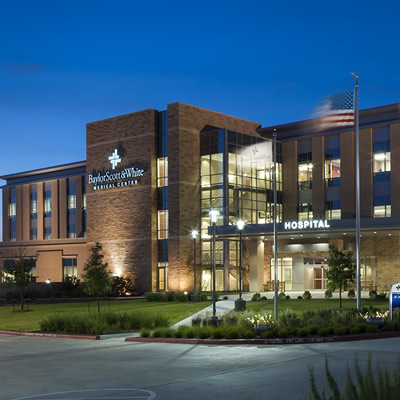
Baylor Scott & White Medical Center - Marble Falls
810 W State Hwy 71 , Marble Falls, TX, 78654
Frequently asked questions
-
Is Parkinson's disease genetic?
Yes, Parkinson's disease can be genetic. About 10 to 15% of cases are familial, linked to gene mutations like SNCA, LRRK2, PARKIN, PINK1, and DJ-1. However, most cases are not inherited, and both genetic and environmental factors may contribute. Having a gene change increases the risk but doesn't guarantee you’ll develop Parkinson’s.
-
Is Parkinson's disease an autoimmune disease?
Parkinson's disease is not considered an autoimmune disease, but some research suggests the immune system might play a role. Studies have found immune cells and antibodies in the brains of people with Parkinson’s, which could be linked to the condition, though more research is needed to fully understand this connection.
-
Can Parkinson's disease be cured?
There is no cure for Parkinson's disease right now. It's a condition that gets worse over time (or “progresses”), affecting movement and balance. But treatments like medication, therapy and sometimes surgery can help manage symptoms and improve daily life, helping people stay active and independent.
-
How common is Parkinson's disease?
Parkinson’s disease affects about one million people in the US It's the second most common brain disease after Alzheimer's. Each year, around 90,000 people are diagnosed. While it’s more common with age, about 4% of those with Parkinson’s are diagnosed before 50. Men are more likely to develop it than women.
-
Does Parkinson's disease cause pain?
Yes, pain is common in Parkinson's disease and affects many people. It can feel like muscle pain, stiffness or pain from involuntary movements. Pain can change over time and make daily activities harder. Talk to your doctor about any pain you experience so they can help manage it.
-
Is Parkinson's disease a form of dementia?
Parkinson’s disease is not dementia. It mainly affects movement. However, some people with Parkinson’s may experience changes in thinking or memory later on, called Parkinson’s disease dementia. This is different from other types of dementia, like Alzheimer’s, but Parkinson’s can increase the risk of developing dementia.
-
Can young people get Parkinson's disease?
Yes, young people can develop Parkinson’s disease, known as young-onset Parkinson’s disease (YOPD). Though more common in older adults, about 5-10% of Parkinson’s cases are diagnosed under 50. Symptoms are similar to those in older adults, like tremors and slow movement. Early diagnosis and treatment are important.
